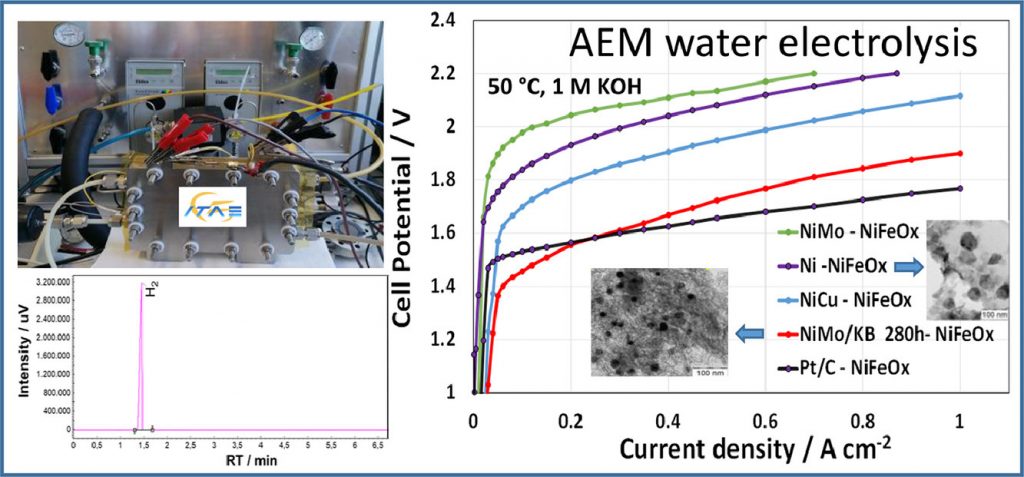Performance and stability of a critical raw materials-free anion exchange membrane electrolysis cell, S. Campagna Zignani M. LoFaro A. Carbone C. Italiano S. Trocino G. Monforte A.S. Aricò Electrochimica Acta, 140078, 2022
A paper has been published by our partner CNR-ITAE
Read the abstract below to find out more information or click here to read the full paper
A water electrolysis cell based on anion exchange membrane (AEM) and critical raw materials-free (CRM-free) electrocatalysts was developed. A NiFe-oxide electrocatalyst was used at the anode whereas a series of metallic electrocatalysts were investigated for the cathode, such as Ni, NiCu, NiMo, NiMo/KB. These were compared to a benchmark Pt/C cathode. CRMs-free anode and cathode catalysts were synthetized with a crystallite size of about 10 nm. The effect of recirculation through the cell of a diluted KOH solution was investigated. A concentration of 0.5–1 M KOH appeared necessary to achieve suitable performance at high current density. amongst the CRM-free cathodes, the NiMo/KB catalyst showed the best performance in the AEM electrolysis cell achieving a current density of 1 A cm−2 at about 1.7–1.8 V/cell when it was used in combination with a NiFe-oxide anode and a 50 µm thick Fumatech FAA-3–50® hydrocarbon membrane. Durability tests showed an initial decrease of cell voltage with time during 2000 h operation at 1 A cm−2 until reaching a steady state performance with an energy efficiency close to 80%. An increase of reversible losses during start-up and shutdown cycles was observed. Appropriate stability was observed during cycled operation between 0.2 and 1 A cm−2; however, the voltage efficiency was slightly lower than in steady-state operation due to the occurrence of reversible losses during the cycles. Post operation analysis of electrocatalysts allowed getting a better comprehension of the phenomena occurring during the 2000 h durability test.
